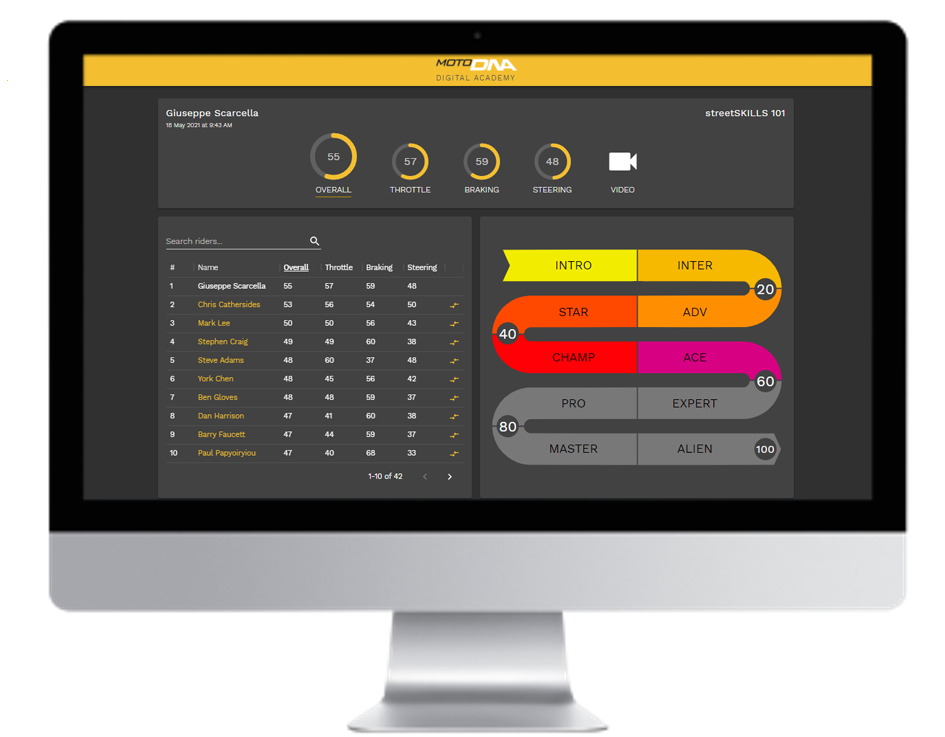In this post, rather than hypothesise on what’s what on a MotoGP front-end, we explain what all those wires mean, why they are there and what they do…
1. Brake disc temperature Infra red sensor.
Carbon brakes are more temperature sensitive to steel disc brakes and work best at high temperatures. These infra red sensors enable MotoGP Engineers to data log and monitor temps to ensure they are within the optimum operating range. The sensor is non contact and uses infra red radiation principles to supply a voltage, linked to the temperature of the disc, to the data logger.
2. Brembo billet monoblock calipers
Billet calipers are machined from a single alloy billet which makes them very stiff compared to bolt together versions. That means more of the braking force is applied to the pads and discs, rather than the calliper flexing, resulting in a high metal mass to stiffness ratio and increased braking performance. The caliper has a central bridge structure that further increases overall stiffness and a special surface treatment of nickel coating which improves the machining tolerances, bringing benefits in terms of performance, precision and a cool look.
3. Wheel speed sensors
Wheel speed sensors provide high resolution data for the traction control system. Over the last few years traction control has become more advanced with MotoGP engine control systems now using a plethora of sensors and algorithms in the search for more speed. Traction control systems basically monitor front and rear wheel speeds, and reduce power if the rear wheel goes faster than the front.
However as the bike lean angle changes so does the tire diameter in contact with the track, changing the gearing and engine rpm. Also some wheel spin is desirable for optimum grip and to turn the bike exiting a corner. Now things start to become a little more complex as engine rpm, gear position, speed and throttle position sensors are brought into play.
Early wheel speed measurement used a hall affect sensor that was triggered by the brake disc bolts or a metal timing disc with cutouts. This data was low resolution, for example, within 360 degrees of wheel rotation a signal would be generated every 60 degrees by a brake disc bolt. These new wheel speed sensors shown use embedded magnetic ring element encoders, outputting a much higher resolution data stream enabling traction control systems to react much faster.
4. Quick release brake line coupling
The clean break, non spill design enables the mechanics to quickly disconnect the brake lines from the brake callipers without having to bleed the system.
Read about StreetSKILLS, our advanced motorcycle training course
Data Driven
Developed from thousands of riders at the motoDNA Motorcycle Training, our algorithms measure, grade and train motorcycle riders.
Objective
No more guessing, data sensor fusion combined with our algorithms deeply understand rider behaviour.
Towards Zero
Our urgent and ambitious aim is to empower the motorcycle community to take back control towards zero.


